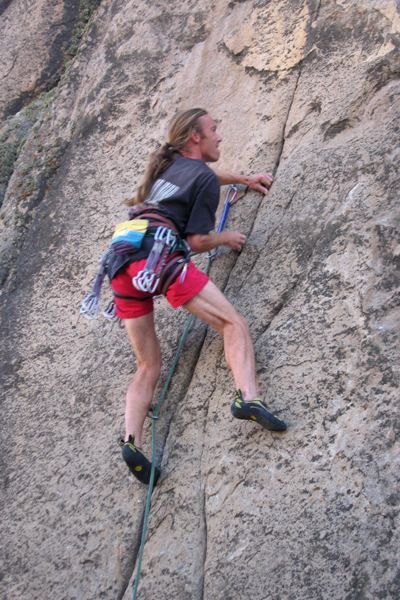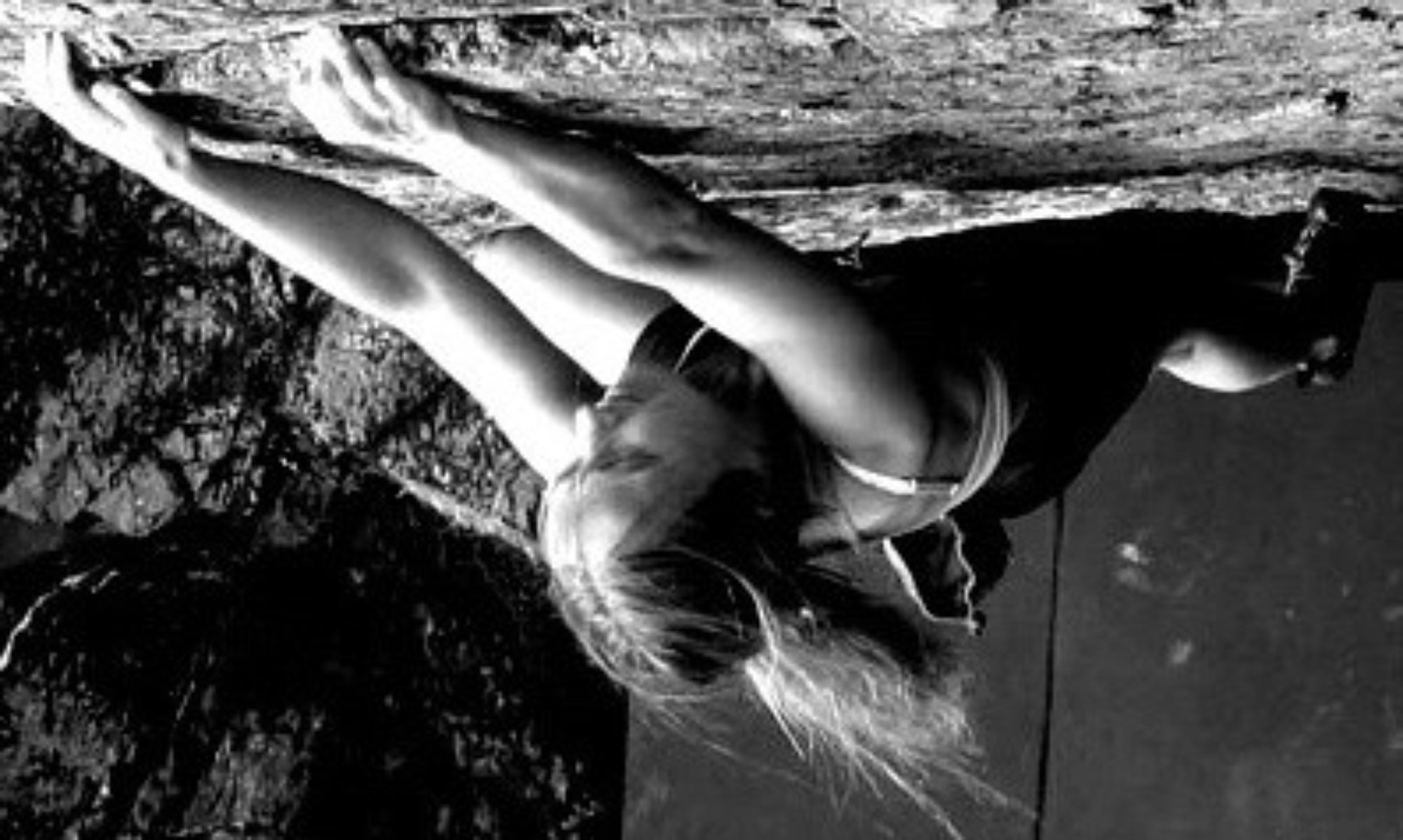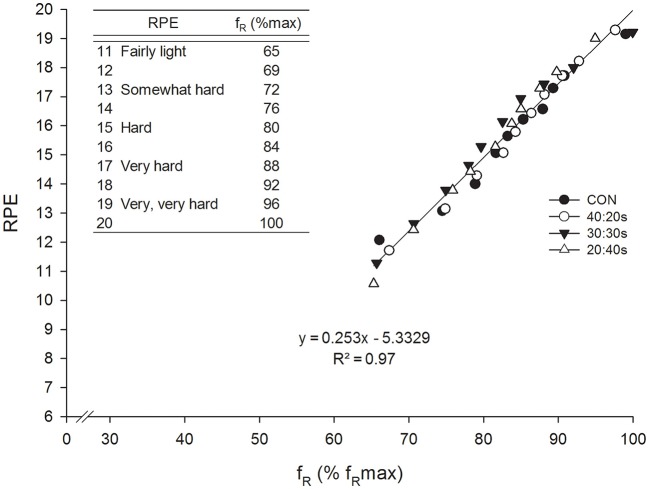
Rest, or climb, and breathe………
Fryer and colleagues find advanced climbers:
“spent a significantly greater period of time shaking out and actively resting the arms” resulting in “increased blood flow, reducing metabolites [e.g. H+, adenosine, lactic acid, etc.] and the presence of the metaboreflex.”[1]
Paige Claassen recently sent Dreamcatcher 5.14d/ 9a. She rested for 4 minutes, breathing deeply and shaking out, before committing to the final moves:
“Some serious effort on the final boulder, followed by 4 riveting minutes of resting, and a nervous top out.”[2]
She says in an earlier article:
“The most crucial part of my redpoint burns is breathing. My stomach might hurt, my muscles might feel sore, but I still have a chance if I just breathe….“I don’t believe I’m much stronger than I was five years ago, but today I breathe and I never say take.” [3]
Trail running is a key part of her training. She says running has maintained her fitness when she can’t climb, increased her endurance and power, strengthened her legs for dynamic moves, and she can recover faster even when there are no great rests.
Sheel, summarizes from the available data:
“climbing requires use of a significant portion of whole-body aerobic capacity.”[4]
However, it has been found:
“Climbers exhibit a lower aerobic capacity [VO2 max] than other elite athletes of similar body composition, i.e., endurance athletes.”[5]
VO2 MAX (aerobic capacity/ maximal oxygen uptake) refers to the highest rate at which oxygen can be taken up and consumed by the body during intense exercise.
VO2 MAX is limited by the ability of the cardiorespiratory system to deliver oxygen to the exercising muscles. The more aerobically fit an athlete is the more likely VO2 MAX will be higher. It sets the upper limit for aerobic performance.
Michaela Kiersch says she sent Mind Control (5.14b) by increasing her cardiorespiratory fitness. She says running helped her climb faster, recover better on the wall and control her breathing and heart rate:
“Regulating your breath during a long crux sequence comes partly from having a certain fitness level but also from experience. During cardiovascular exercise, it’s easier to learn to breathe in a controlled fashion and to be aware of your heart rate than when you’re panicked on the rock. You can then transfer these breathing skills—a calm, slow breath while resting and a hard, forceful breath during exertion—to your climbing.”[6]
Michaela sent Dreamcatcher a few days after Paige.
Cardiorespiratory endurance.
“CRF, also known as cardiorespiratory endurance, cardiovascular fitness, aerobic capacity, and aerobic fitness, among others, refers to the capacity of the circulatory and respiratory systems to supply oxygen to skeletal muscle mitochondria for energy production during physical activity.”[7]
A 2008 study identifies :
“cardiorespiratory fitness and dynamic strength of upper extremities seem to be the key factors in sport climbing.”[8]
Balas and colleagues summarized seven climbing studies. They found:
“climbers with low aerobic fitness (less than 45 mL·kg−1·min−1) may be limited during climbing to exhaustion by the cardiorespiratory system.”[9]
Smith and colleagues say:
“Whilst the predominant energy source during bouldering is likely to be derived from the anaerobic pathways, it should be acknowledged that an elite individual training for many hours will largely rely on the oxidative system for continued muscle contraction and recovery from high intensity bouts of exercise.”[10]
Resting is not only finding balance and shaking out. It’s conserving energy, recovering our body and mind, slowing our heart rate down, relaxing any unnecessary tension. We do this by breathing deeply and slowly.
During sports or deep breathing the diaphragm can move as much as 10cm depending on its strength and our ability to activate it.
“In shallow respiration the descent of the diaphragm can be as little as 1.5cm, whereas in deep respiration it can be as much as 10cm.”[11]
What does Tommy Caldwell do?
“Breathe, relax, exhale … hold on just hard enough, just loose enough, shake out, milk this rest, get it back, breeeeathe.”[12]
Adam Ondra says climbing is easy if you either climb or relax:
“It’s easy: I’m either climbing or relaxing.”[13]
Watch Adam climbing Silence [14]. During easier climbing he breaths easy and rhythmically. During rests he breathes deeply and slowly and relaxes. He slows down his heart rate to recover and reset momentarily. He recovers his breathing muscles. After resting and breathing slowly, he speeds his breathing up for the harder climbing. This is important for energy and attention.
Breathe a breath to match your energy needs. Adam says at one point:
“I entered the crux too relaxed.”
Adam had a moments lack of attention which would be revealed in his breathing pattern.
As we all know, Adam screams during crux moves.
The diaphragm has a dual role in spinal stability and breathing which it does simultaneously.
Sports science says:
“When experiencing substantial exercise fatigue, some athletes attempt to
maintain a strong athletic performance by yelling.”[15]
Hazel Findlay recently climbed Muy Caliente, a classic run-out E9 in Pembroke. She says:
“A power scream kept me on the rock and I managed to keep myself together for the rest of the route.”[16]
Power screams, swearing, pasat, ptssaaa or grunting are powerful, audible exhales.
A 2019 systematic review on climbing points out:
“An efficient climbing style is based on perpetual focus, accuracy and high postural stability.”[17]
Breathing is key in all three.
A stronger diaphragm recovers faster.
“Metaboreflex is where the body restricts blood flow to the limbs when the breathing muscles fatigue.”[18]
Strengthening the diaphragm attenuates this response. The diaphragm has a high percentage of fatigue-resistant muscle fibres, a greater oxidative capacity (ability to use oxygen) and a high to moderate density of blood capillaries (a larger blood flow to deliver oxygen).
Sports science studies emphasize:
“The dual role of the diaphragm is essential for spinal stability and all resultant movements, especially for the complex tasks that comprise athletic performance.”[19]
Szczygiel and colleagues say:
“Postural control and breathing are mechanically and neuro-muscularly interdependent. Both systems – of spinal stability and respiration – involve the diaphragm, transversus abdominis, intercostal muscles, internal oblique muscles and pelvic floor muscles.”[20]
Kibler and colleagues tells us:
“core stability is the ability to control the position and motion of the trunk over the pelvis to allow optimum production, transfer, and control of force and motion to the terminal segment in integrated athletic activities. In other words, proximal stability sets the stage for distal mobility.”[21]
- The diaphragm performs breathing and spinal stability simultaneously.
- A solid torso/ core begins with the diaphragm and radiates out to the furthest extremities.
- Diaphragmatic motion and contraction of the pelvic floor muscles correlate with breathing.
- The diaphragm’s proper function and mechanical action efficiency depends on its anatomic arrangement with the lower rib cage which is known as the Zone of Apposition. It is influenced by the orientation of the rib cage.
Breathing while climbing.
Resting/ recover – diaphragmatic breathing. Breathe slowly and deeply until you’re ready to climb again. Close eyes momentarily. Smile and relax face. Keep your shoulders down.
Easy climbing – breathe in and out through your nose.
Harder climbing – breathe in through your nose and out through your mouth. Keep it rhythmic. Breathing in through your nose increases nitric oxide levels (vasodilation).
Crux moves – exhale strongly (shout ptssaa (pasat), swear, power scream).
[1] The effect of technique and ability on the VO2 – heart rate relationship in rock climbing (2012). Simon Fryer1, Tabitha Dickson1, Nick Draper1, Mark Eltom2, Lee Stoner3, Gavin Blackwell1.
[2] https://www.instagram.com/p/CTcvpgaDVOa/
[3] https://www.trainingbeta.com/paige-claassen-on-breathing-and-falling/
[4] Physiology of sport rock climbing (2004). A W Sheel.
[5] Physiological demands and nutritional considerations for Olympic-style competitive rock climbing (2019) Marisa Michael, Oliver C Witard, Lanae M. Joubert.
[6] https://www.climbing.com/skills/cross-train-with-focus-for-better-sending/
[7] https://www.ahajournals.org/doi/full/10.1161/CIR.0000000000000866
[8] Somatic and functional profile of sport rock climbers (2008). André Padrenosso 1,2 A D, Erik S. de Godoy 1 – 5 A B D - F, Eurico César 2 E F, Ana Barreto 1,2 C E F, Vitor Reis 5 E F, Antonio Silva 5 E F, Estélio Dantas 2,5 C - F
[9] The Relationship between Climbing Ability and Physiological Responses to Rock Climbing (2014). Jiří Baláš,1 Michaela Panáčková,1 Barbora Strejcová,1 Andrew J. Martin,2 Darryl J. Cochrane,2 Miloš Kaláb,1 Jan Kodejška,1 and Nick Draper3.
[10] Nutritional Considerations for Bouldering (2017). Edward J. Smith1 , Ryan Storey2 , and Mayur K. Ranchordas.
[11] Anatomy and Human Movement, Structure and function (2011). Sixth Edition. By Nigel Palastanga, Roger Soames.
[12] Caldwell, Tommy. The Push (p. 45). Penguin Books Ltd. Kindle Edition.
[13] Adam Ondra hung with sensors. What makes him the world’s best climber?
Jan Boček, Jan Cibulka, Michaela Danelová, Damian Machaj aRobert Candra | 14 Sep 2018.
[14] ADAM ONDRA. YOUTUBE CHANNEL. https://www.youtube.com/watch?v=ZRTNHDd0gL8
[15]https://www.sciencedirect.com/science/article/pii/S2095254615000964
[16] https://www.climber.co.uk/news/muy-caliente-e9-for-findlay/
[17] Determinants for success in climbing: A systematic review (2019). Dominik Saula , Gino Steinmetzb, Wolfgang Lehmanna. Arndt F. Schillinga.
[18] Muscle metaboreflex activation during dynamic exercise vasoconstricts ischemic active skeletal muscle (2015). Jasdeep Kaur, Tiago M. Machado, Alberto Alvarez, Abhinav C. Krishnan, Hanna W. Hanna, Yasir H. Altamimi, Danielle Senador, Marty D. Spranger, and Donal S. O'Leary.
[19] DYNAMIC NEUROMUSCULAR STABILIZATION & SPORTS REHABILITATION. Clare Frank, DPT, OCS, FAAOMPT,1 Alena Kobesova, MD, PhD,2 and Pavel Kolar, PT, PhD2
[20] The Impact of Deep Muscle Training on the Quality of Posture and Breathing (2017) Elżbieta Szczygieł, Jędrzej Blaut, Katarzyna Zielonka-Pycka, Krzysztof Tomaszewski, Joanna Golec, Dorota Czechowska, Agata Masłoń & Edward Golec.
[21] The Role of Core Stability in Athletic Function (2006). W. Ben Kibler, Joel Press and Aaron Sciascia.




